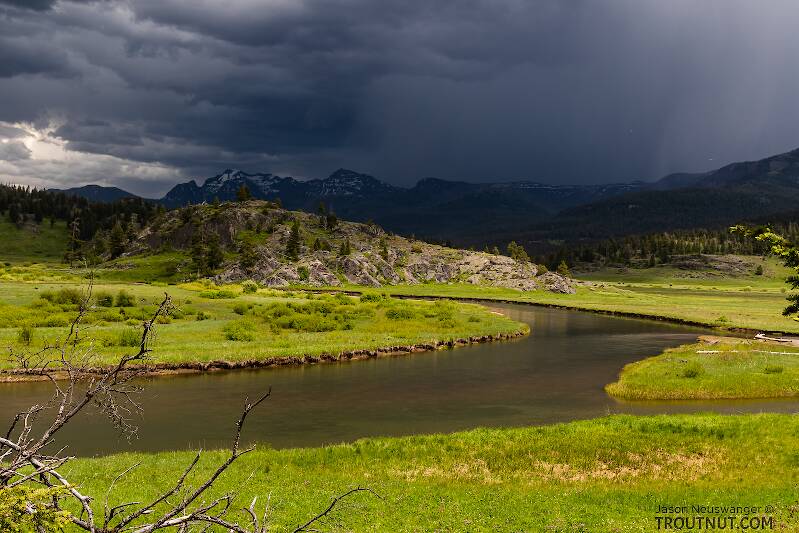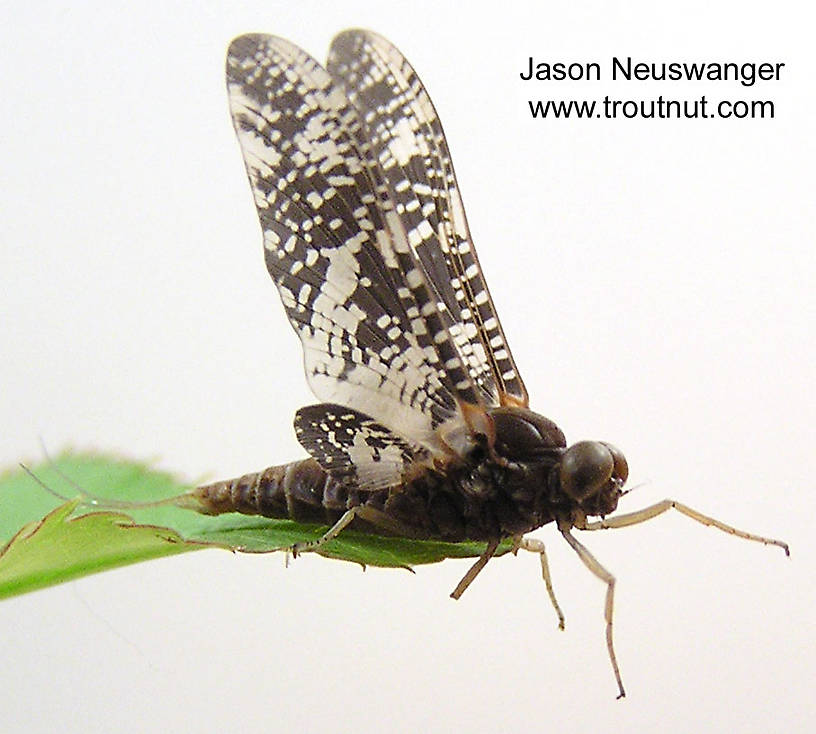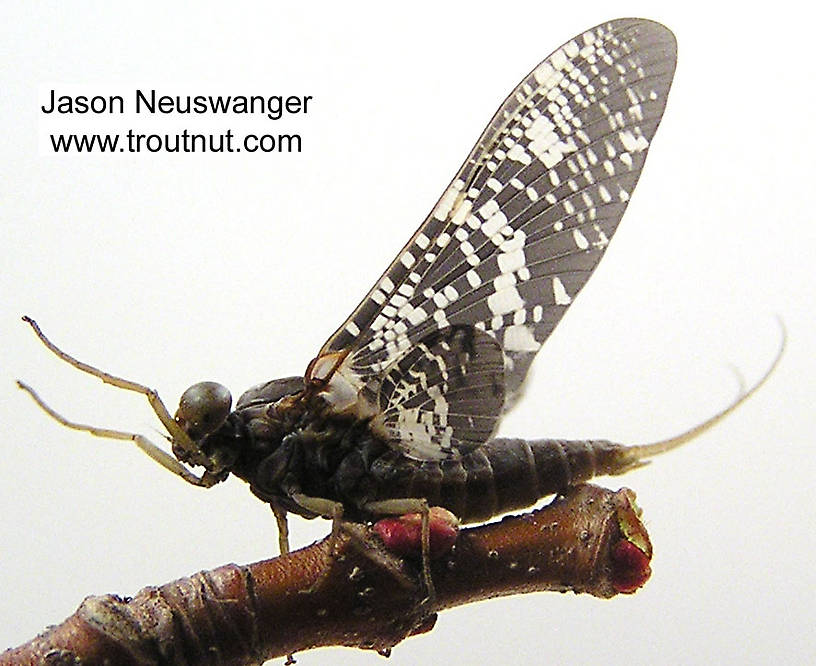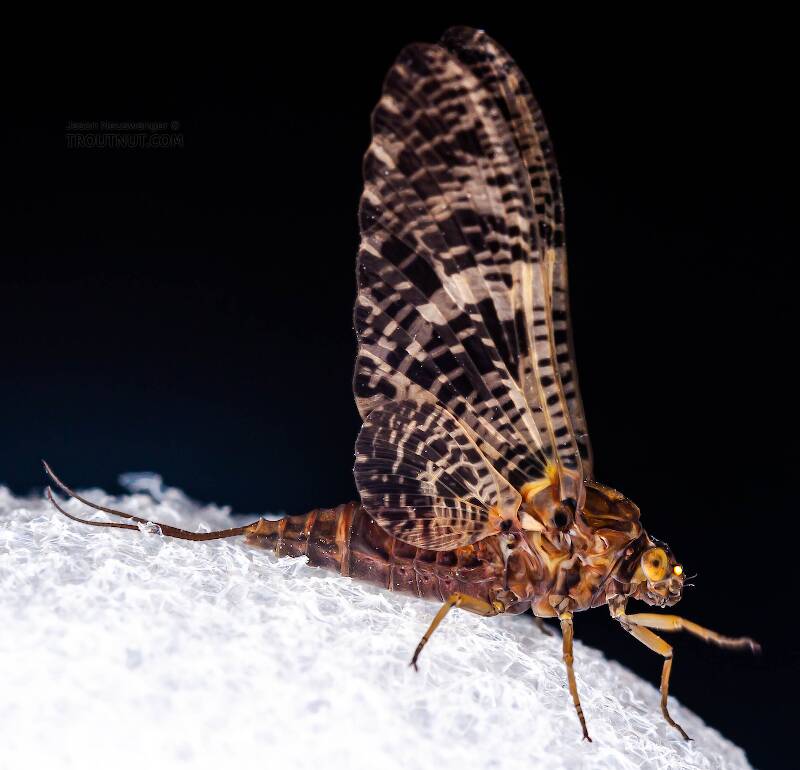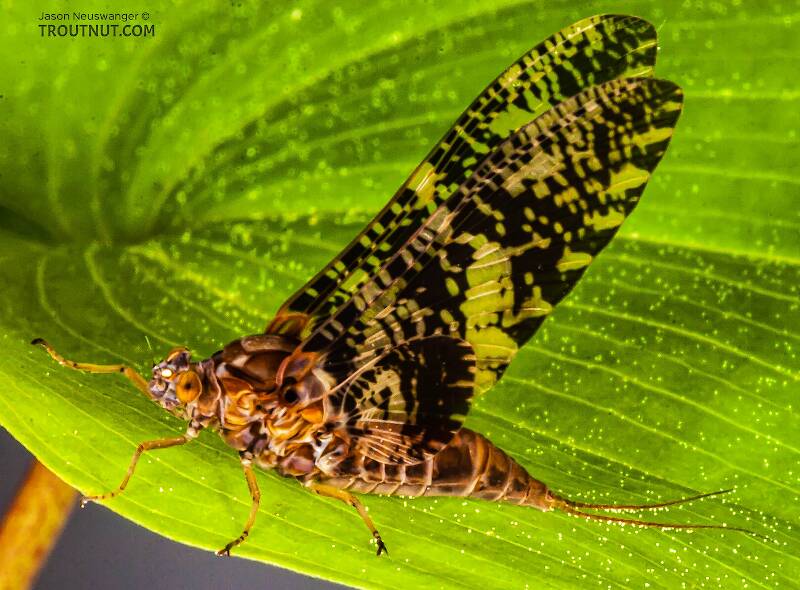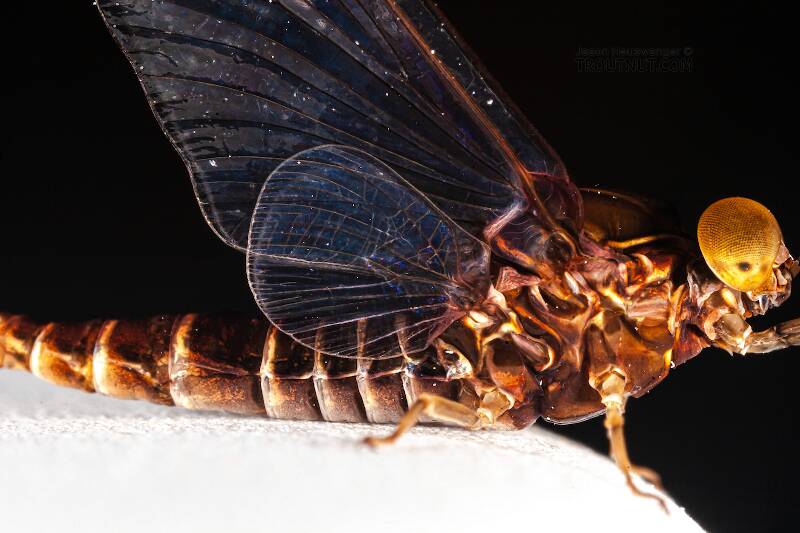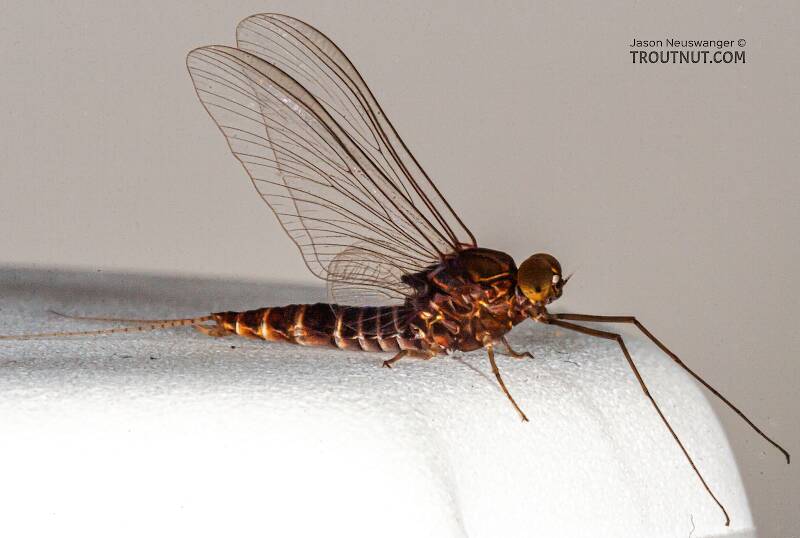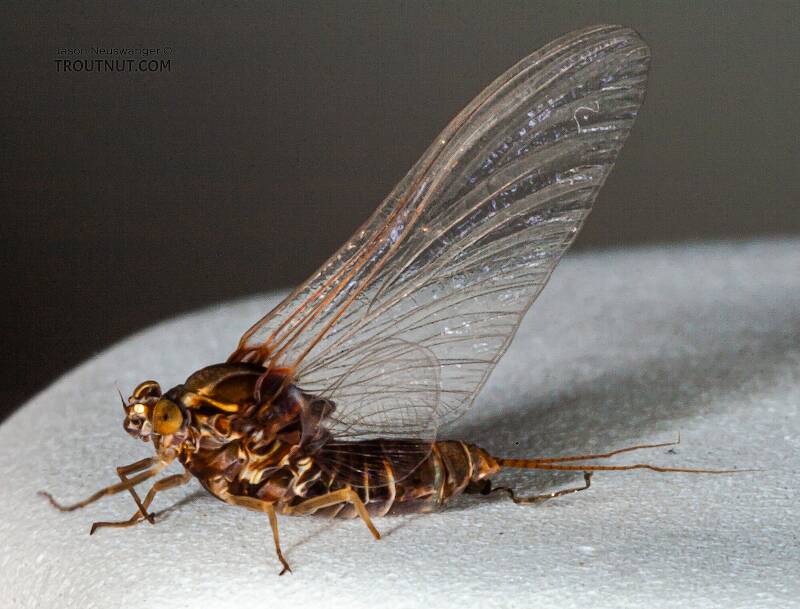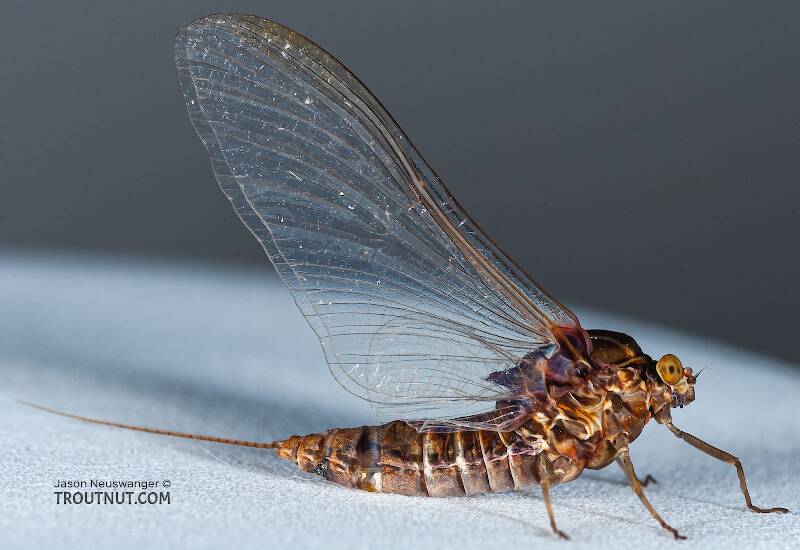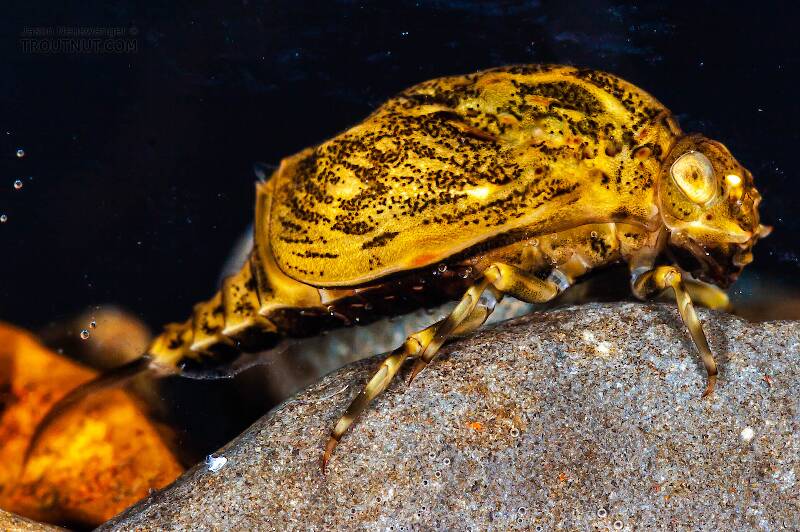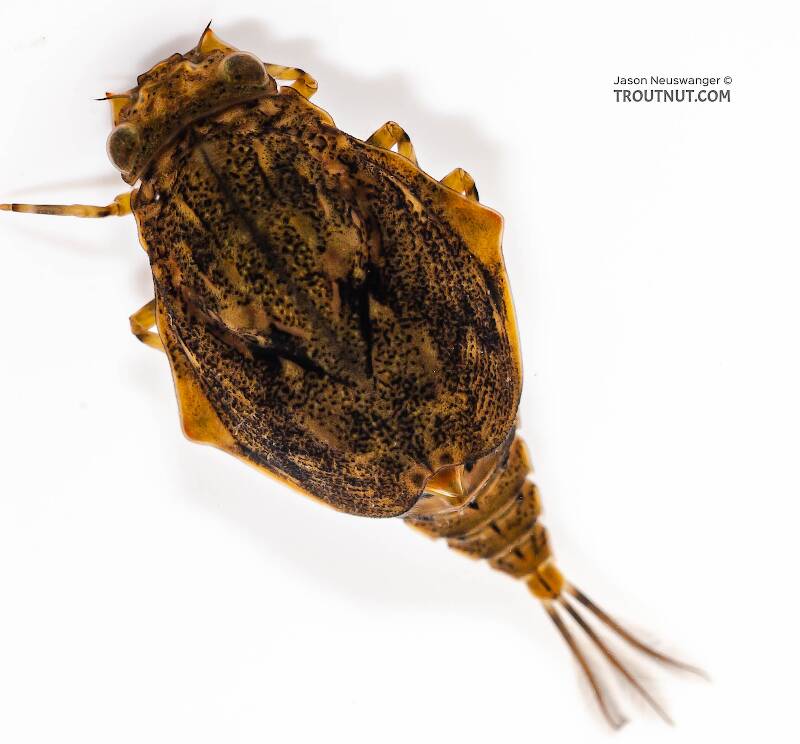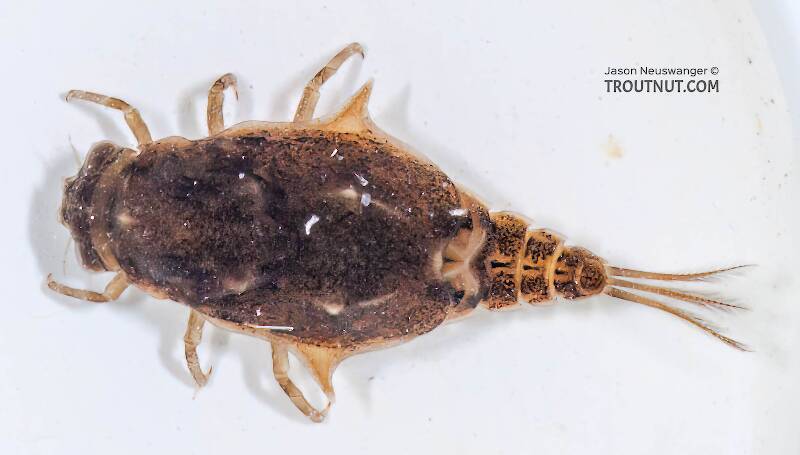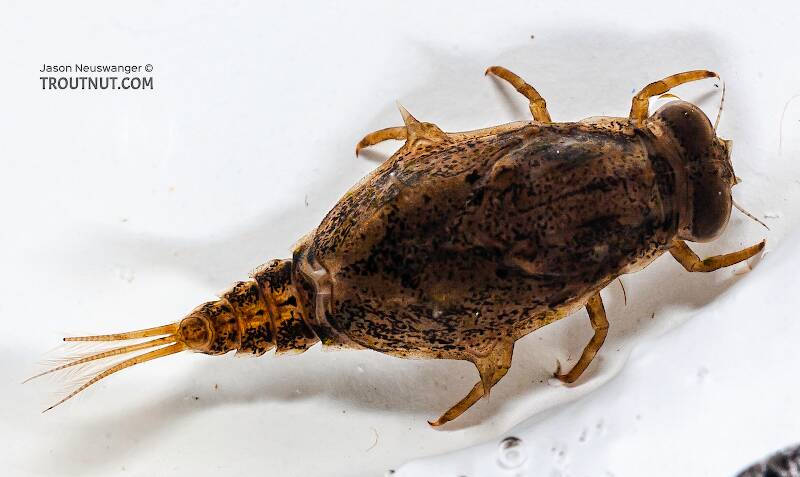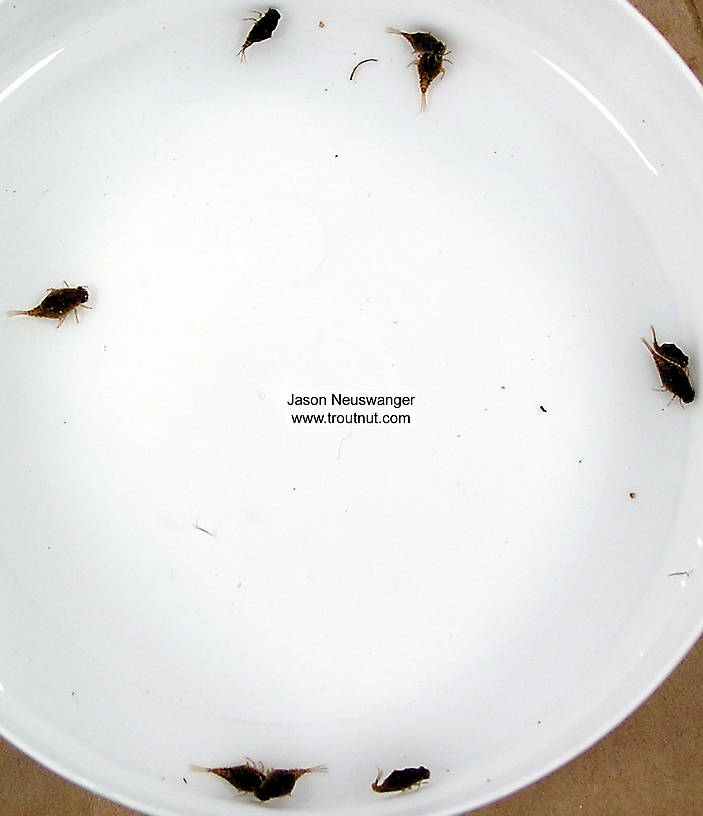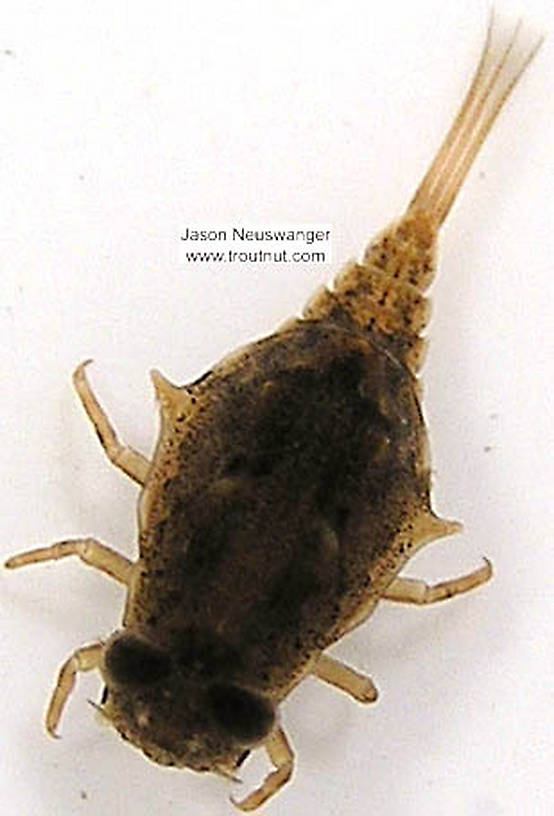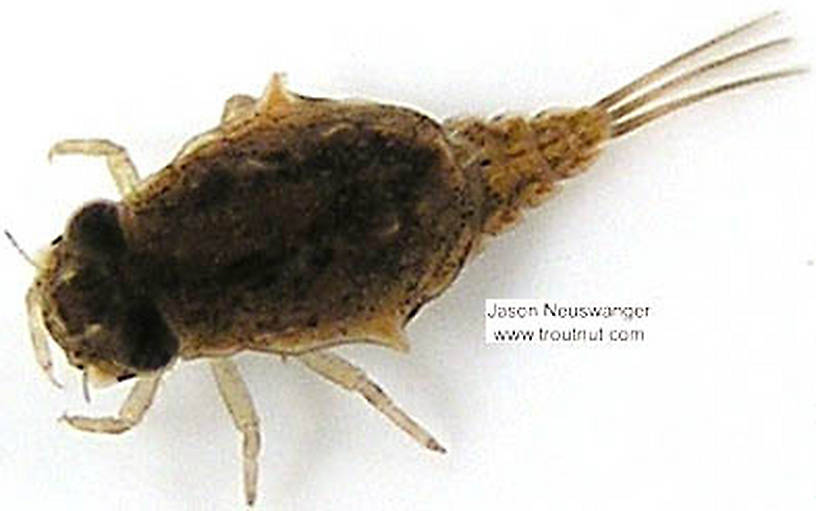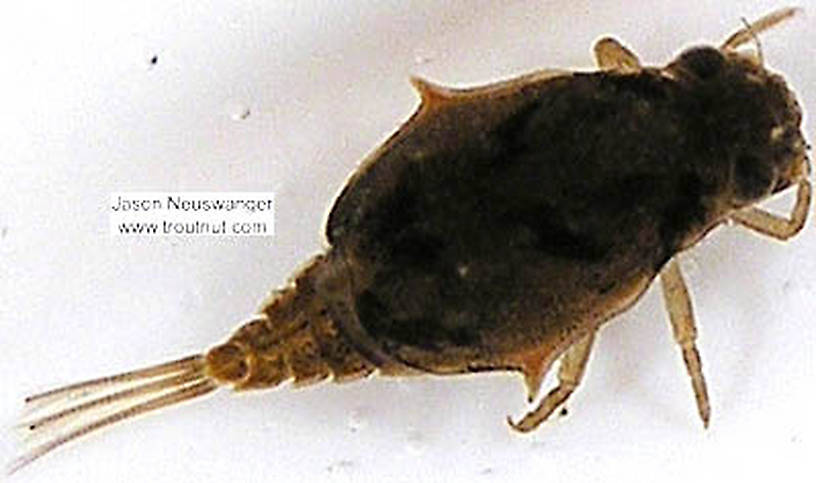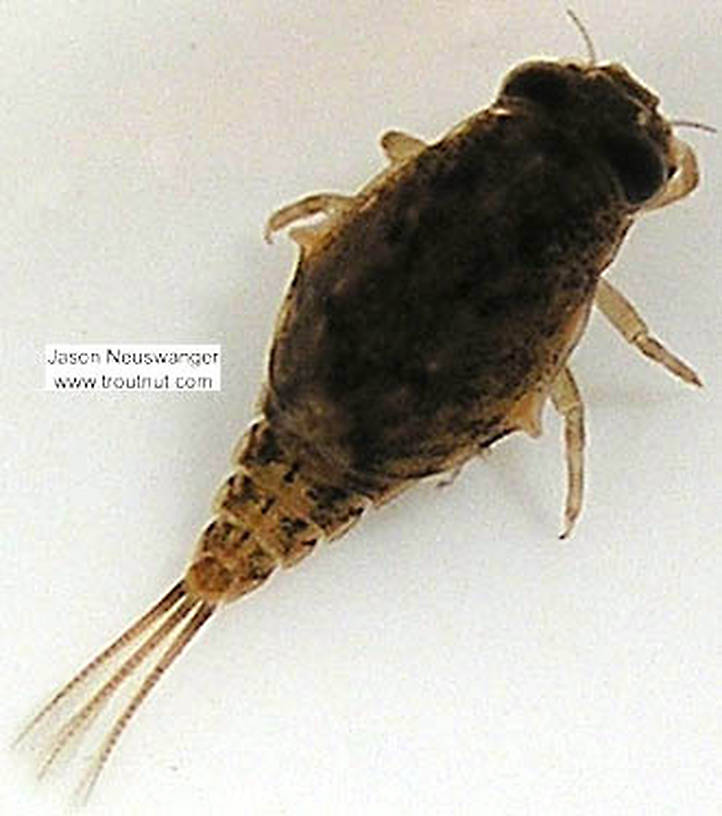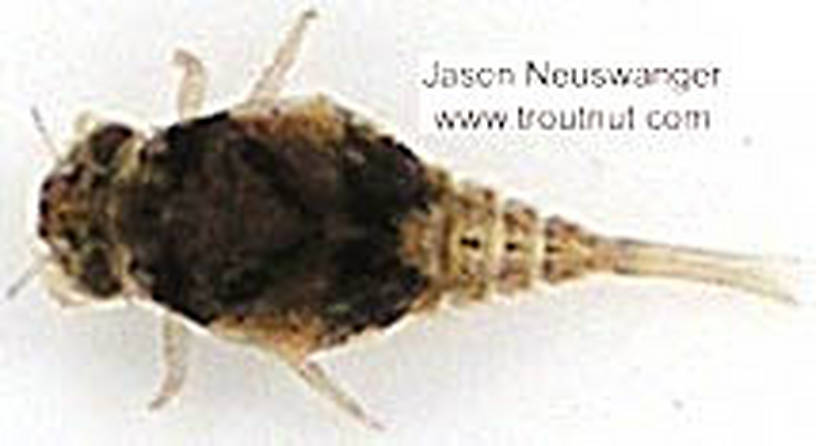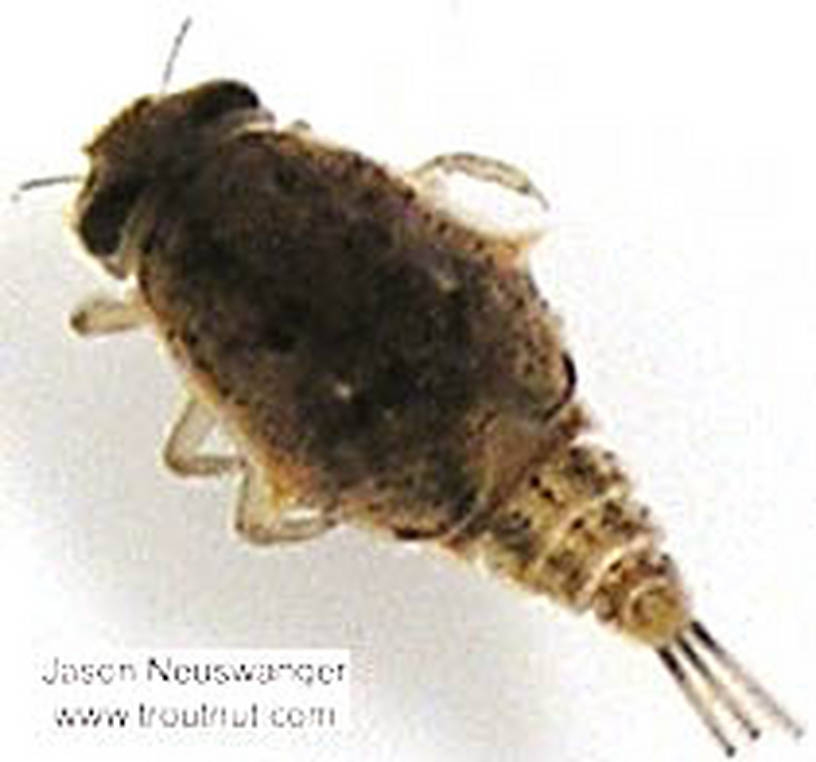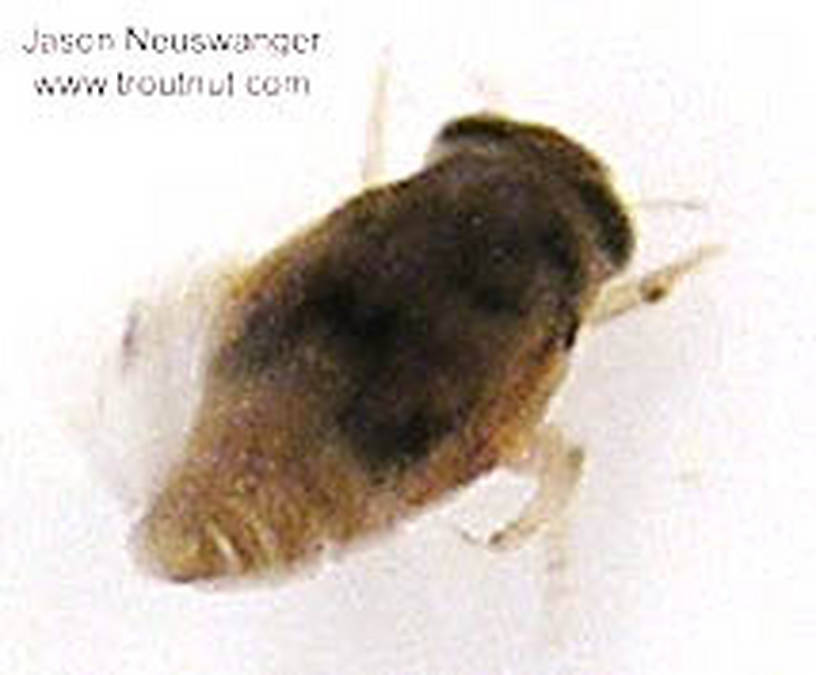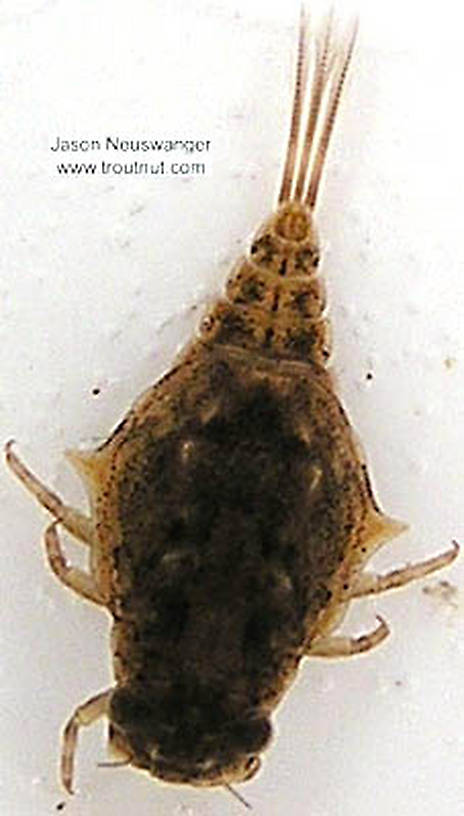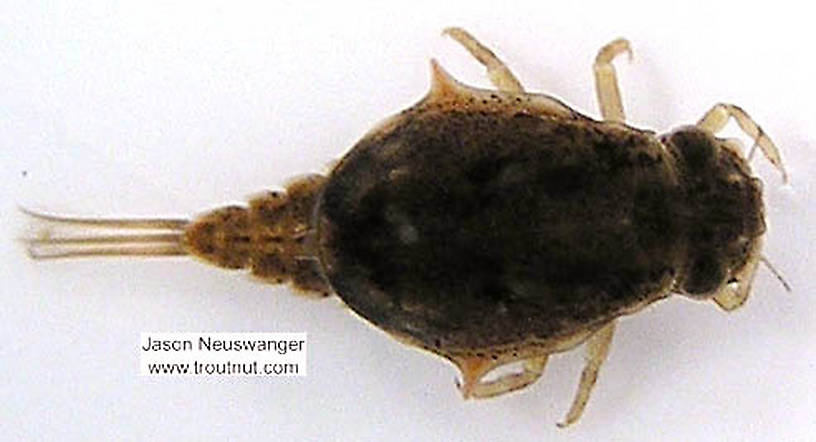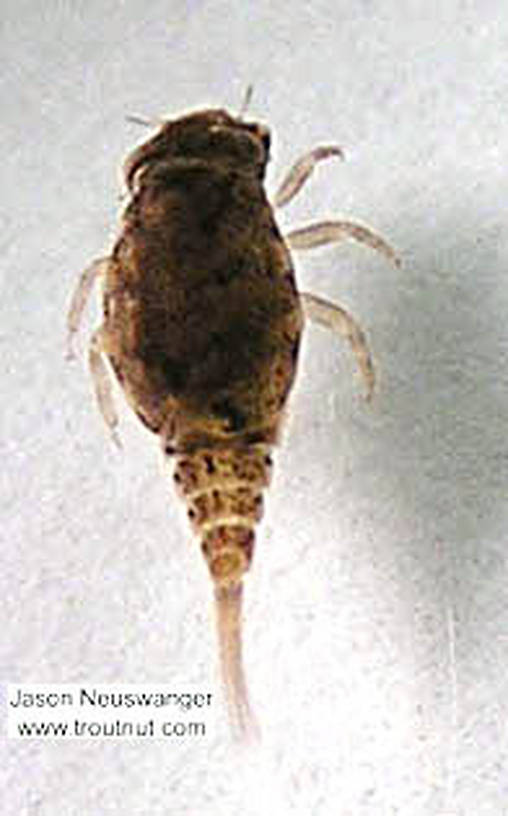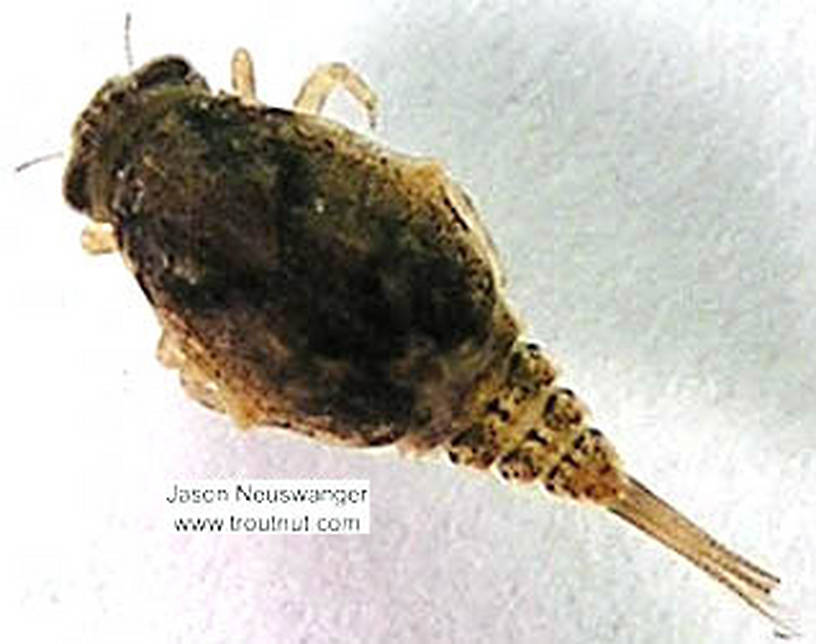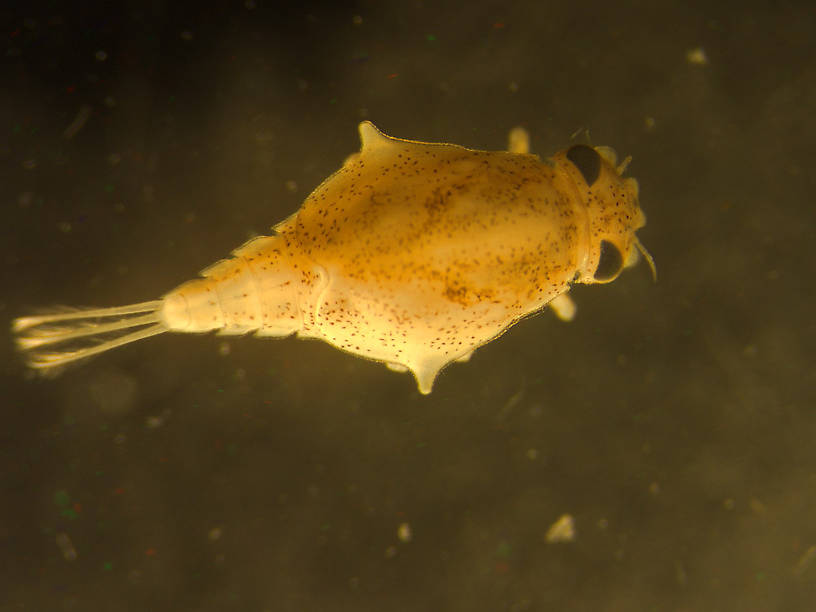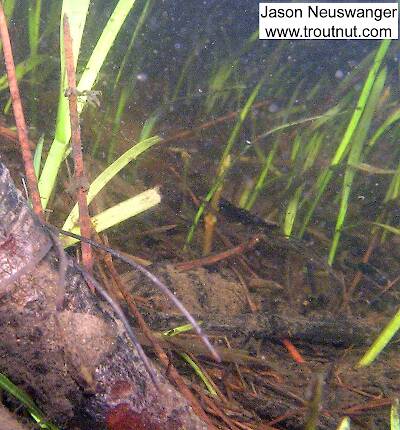
Blue-winged Olives
Baetis
Tiny Baetis mayflies are perhaps the most commonly encountered and imitated by anglers on all American trout streams due to their great abundance, widespread distribution, and trout-friendly emergence habits.


Mayfly Genus Baetisca (Armored Mayflies)
Their primary claim to fame is their peculiar shape, both as nymphs and as adults. On most rivers they are a rare oddity, but there are places where their spinner falls elicit greedy rises and staunch selectivity from the trout. These spinners never even come close to blanketing the water, but trout have such an affinity for them that even their sparsest falls should excite the angler.
I favor two explanations for their importance. First, they have a very stout profile, and late-season beetle action suggests that trout like this trait. Second, the Baetisca action lasts for up to a month on a single stretch of water. This caters to the selective trout's love of the familiar.
Where & when
I have found good populations of Baetisca laurentina in three drainages in northern Wisconsin, where their activity peaks in early June but continues through the rest of the month. I've known fish on the Bois Brule River to feed greedily and selectively on Baetisca spinners. In the East, where the major species is Baetisca obesa, Ernest Schwiebert reported their importance on the Neversink in the Catskills, and I've heard multiple reports of Baetisca spinner fall rises on the Battenkill in Vermont.In 35 records from GBIF, adults of this genus have mostly been collected during June (31%), May (23%), April (17%), July (11%), August (9%), and March (6%).
In 17 records from GBIF, this genus has been collected at elevations ranging from 3 to 2625 ft, with an average (median) of 2152 ft.
Genus Range
Hatching behavior
Baetisca nymphs crawl out of the water to emerge, which may take ten minutes or more, so the duns are of no interest to the trout. They are unique among mayflies in that they may crawl more than one meter from the water to emerge, a behavior reported in Edmunds and McCafferty's The Mayfly Subimago. Some stoneflies do this, but other mayflies which crawl out of the water only go a few inches.The duns are pretty insects with stout bodies and Dalmatian-speckled wings which become clear when they molt into spinners.
Spinner behavior
Time of day: Mid-evening. They usually fall from 8 to 9 p.m., but can anytime from 6:30 to dusk. Sometimes dawn.
Habitat: Both riffles and calm runs
Notice in my photos that the female spinners are extremely fat mayflies (don't tell them I said that). The males, though still not as slender as a normal mayfly, are much less robust. Spinner patterns should imitate the full-figured females, because they seem to be more common on the water than the males.
They are rarely spent as soon as they fall on the water. They float at first with their wings upright like duns, and then many collapse half-spent for quite a while before finally losing their energy and becoming fully spent. These upright and half-spent phases last longer with Baetisca spinners than with other mayflies.
I have always fished Baetisca spinners in the evening in Wisconsin, but an early-rising friend reports spinner falls very early in the morning over slow water in Michigan.
Nymph biology
Current speed: Slow to medium
Substrate: Very diverse: cobble, gravel, sand, silt
Environmental tolerance: Schwiebert writes that they prefer cold, acid watersheds, but I have found fishable populations in alkaline streams of marginal temperature as well.
Several authors write that the nymphs submerge themselves in the thin layer of silt and detritus that accumulates in the calm shallows. I do collect the most nymphs from such habitats, but they are also found on large rocks in riffles and on sunken logs.
Baetisca nymphs are surprisingly fast swimmers given their awkward shape. They move like Baetis nymphs wearing backpacks. See my video at the bottom of this page.
Baetisca Fly Fishing Tips
It is essential to imitate the thick, opaque body of the Baetisca spinners with a specialized fly. A normal thin-bodied spinner pattern in the right color and hook size once left me skunked after 45 minutes casting to two dozen selective Baetisca-feeding trout. I do not repeat that mistake.I wrap an underbody of thin closed-cell foam to the appropriate profile and dub over it. Fly shops in Baetisca country sell patterns with heavy badger hackle, because the dark inside color is suggestive of the spinner's thick body. Both patterns can work.
Specimens of the Mayfly Genus Baetisca
2 Male Duns
2 Female Duns
2 Male Spinners
2 Female Spinners
17 Nymphs
1 Underwater Picture of Baetisca Mayflies:
1 Video of Baetisca Mayflies:
The clumsy-looking mayfly nymphs of the genus Baetisca are surprisingly good swimmers.
Discussions of Baetisca
It is a tricky hatch to detect. I haven't seen more than a couple of their spinners in the air at a time, though some of my friends report spotting their swarms. Normally for me they just showed up on the water from unseen swarms upstream. They were mixed with spinners from Ephemerella invaria and Maccaffertium vicarium, among others, but the fish were relentlessly selective to the Baetisca laurentina spinners.
I wasted the better part of an hour flinging a sulphur imitation the first time I encountered a Baetisca fall. Like Ephemerella spinners, they can be hard to spot on the water, and they were much more sparse. I finally captured one, noticed the very different body profile, and since I didn't have anything remotely imitating it I continued to catch no fish. I returned the next night with an imitation with a robust, opaque body, and the fish went crazy for it.
I just finished reading through the account by Caucci and Nastasi in Hatches II about how the extremely important Ephemerella invaria sulphur species went unnoticed for decades because it was confused with Ephemerella dorothea. The maddening difficulty of some dorothea hatches was partially explained away once people understood this difference.
Although Baetisca is much less prominent than Ephemerella invaria, I suspect it has similarly been confused with well-known sulphur species in the rare locations and occasions where it is important.
Start a Discussion of Baetisca
References
- Edmunds, G.F. and W.P. McCafferty. 1988. The Mayfly Subimago. Annual Review of Entomology 33: 509-527.
- Knopp, Malcolm and Robert Cormier. 1997. Mayflies: An Angler's Study of Trout Water Ephemeroptera . The Lyons Press.
- Schwiebert, Ernest. 1973. Nymphs. Wichester Press.

